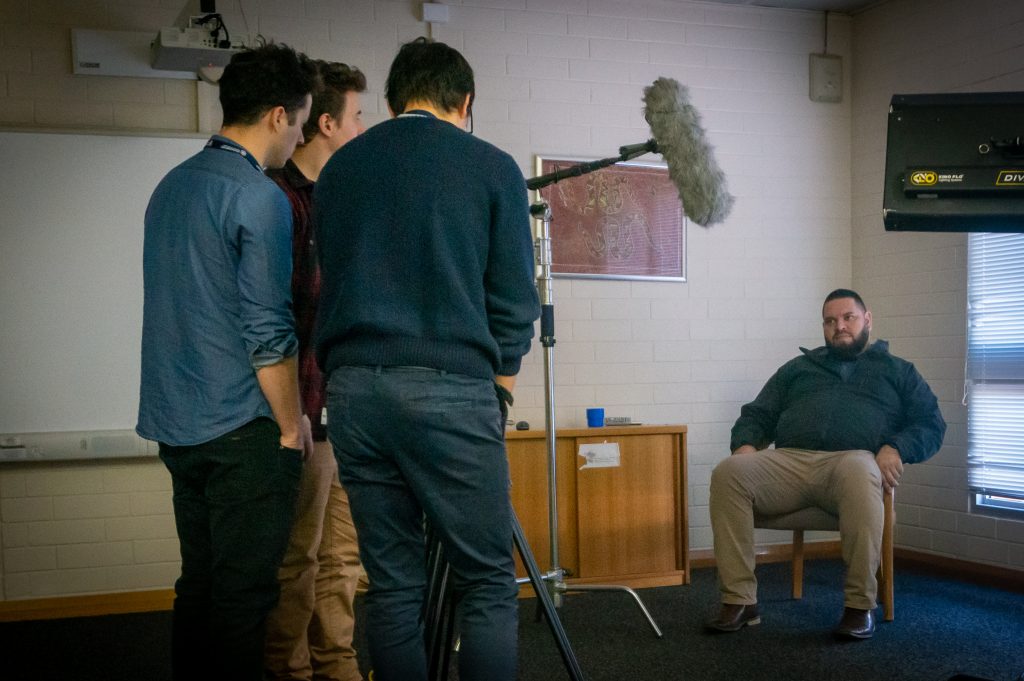Aboriginal and Torres Strait Islander young people continue to be overrepresented in South Australia’s youth justice system. In 2017-18, Aboriginal children and young people made up 66 per cent of the average daily 10 to 17 year olds in detention in the Adelaide Youth Training Centre. This is despite constituting less than five per cent of the state’s total population of children and young people.
In response to these concerning statistics, the Courts Administration Authority (CAA) called on Training Centre Advocate Travis Thomas and Advocate, Aboriginal Children Conrad Morris from the Office of the Guardian to assist with a project to interview Aboriginal young people about their experiences in the youth justice, child protection and courts systems.
Travis and Conrad were asked to identify young people that could be involved in the project. They then held an initial workshop to brief the young people on what the process would involve and what kind of questions they may be asked. This created a safe environment that allowed the young people to open up about their experiences.
Despite being initially surprised at being asked to participate, both young people were eager to get involved and share their stories.

Led by Justice Martin Hinton, this was part of a larger project that aims to bridge the gap in existing cultural awareness training for Judges and Magistrates. The project interviewed Aboriginal South Australians of different ages and from different mobs, including Stolen Generations. It aimed to draw on the experiences of Aboriginal people who have come into contact with the justice system and bring to life the findings of many reports published.
‘That would help us to overcome things like systemic racism and ethnocentrism, and to better understand what we needed to do to deliver justice to Aboriginal people appearing in our courts,’ Justice Hinton says.
The CAA wanted to speak with young people in care and custody because of the known correlation between care experience and imprisonment later in life.
One of the key things Justice Hinton took away from the project is the understanding that things started going wrong for the young people when they were removed from their family and community.
‘Being taken into care and into custody separates them from family, many family members are also in custody. The effect on culture, identity and self-esteem is devastating. They struggle to know who they are,’ Justice Hinton says.
Both young people shared pride in their Aboriginal heritage with one saying, ‘it’s good because it makes me feel like I belong somewhere. Not every person can say I belong to these people and everything like that.’
With maturity and conviction beyond their years, they shared their lived experience of the system and dealing with the intergenerational trauma they have experienced as young Aboriginal people.
Another take away from the project was that young people don’t feel like they’re being listened to when they’re in court.
‘Children and young people in particular can lose their voice in the systems—they are talked at, not too or with. This is a familiar experience within the court system where children and young people rely on their representative to talk for them,’ says Travis.
This was affirmed, with one of the young people saying, ‘sometimes when I’m in court I’ll tell my lawyer to say stuff, he says it but he doesn’t say it in the way that I want him to say it’ and ‘I never understand what they say in court. I always ask to speak to my lawyer after to tell me what happened… You’re just in and out and then you have to be like what just happened, I don’t know.’
The young people involved voiced their opinions on what cultural considerations the Judges and Magistrates need to think about when working with Aboriginal young people.
When asked what they think the Judges don’t understand about being Aboriginal, one of the young people replied, ‘they don’t understand us. They don’t take the time to talk to us properly or talk to people that know us. Like if the Judge sat there and talked to my Nana, I reckon they would think different about me.’
Justice Hinton acknowledges that this program is, of course, not a silver bullet. However, he hopes the understanding taken from project will have a knock-on effect on the profession and begin to filter back into society generally.
‘This project will be a step in the all too slow process of the change that must happen,’ he says.
When asked what they would change about the system, one young person said it would be to ‘employ people who’ve already been through law and that. They could come in and help. Like other Indigenous people, non-Indigenous people, but still that’s been through the jail system. They would have a better understanding.’
Many others assisted the CAA and the Office of the Guardian in the project’s development and consultation. These included Steven Van Diermen from CAA, Shane Tongerie from Youth Justice and the Department of Child Protection for supporting the two young people to participate.
